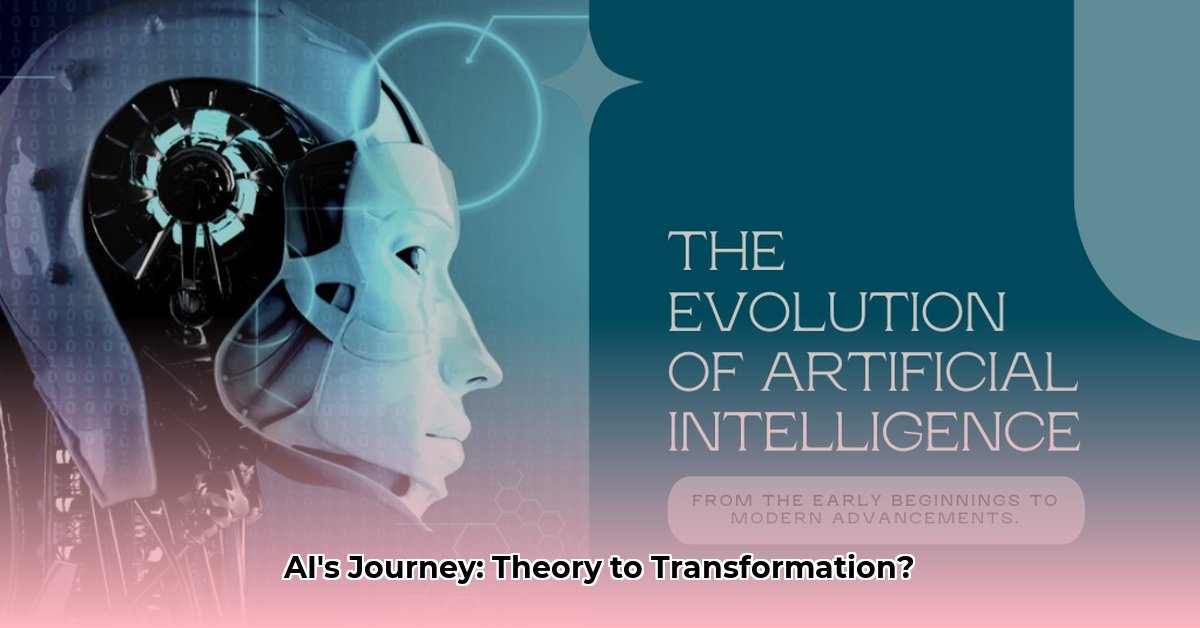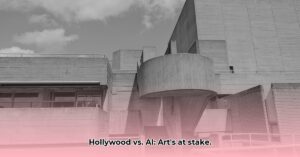The Genesis of Intelligent Machines
The human fascination with thinking machines predates modern technology, woven into ancient myths and futuristic stories. Today, this fascination is rapidly transforming into reality, reshaping our world in profound ways. This article traces the evolution of artificial intelligence (AI), from the theoretical musings of pioneers like Alan Turing to the emergence of sophisticated language models like GPT-3. We’ll explore the key milestones, breakthroughs, and challenges that have shaped AI’s trajectory, examining not just how it evolved, but why. Researchers are even simulating evolution with AI. Learn about AI-powered evolution. We’ll also delve into the societal impact of AI, from its transformative potential to the ethical dilemmas it presents.
From Turing to Transformers: A Historical Overview
Alan Turing’s 1950 proposition, the Turing Test, established a benchmark for machine intelligence: could a machine convincingly imitate human conversation? This question became a guiding principle for AI research. Early AI development (1950s-1970s) focused on symbolic reasoning, creating programs with explicit rules and logic. While programs like the Logic Theorist and the General Problem Solver demonstrated potential, they were limited by computing power and lacked adaptability.
The 1970s and 1980s saw the rise of expert systems, designed to encapsulate human expertise within computer programs. However, these systems proved inflexible and difficult to update, struggling with the complexity of real-world scenarios.
The 1990s ushered in a new era with machine learning. Algorithms began learning from data, utilizing techniques like neural networks and support vector machines. This shift towards data-driven approaches enabled greater flexibility and paved the way for breakthroughs in natural language processing and computer vision.
Deep learning emerged in the 2010s, utilizing multi-layered neural networks to analyze vast datasets and extract intricate patterns. This breakthrough, fueled by increased computing power and data availability, led to rapid advancements across various fields. Key achievements include:
- ImageNet (2012): Convolutional Neural Networks achieved unprecedented accuracy in image recognition, often exceeding human capabilities.
- AlphaGo (2016): Demonstrated deep learning’s capacity for complex strategic thinking by defeating a world champion Go player.
- Transformers (2017): Introduced the “attention mechanism,” revolutionizing natural language processing and enabling more nuanced understanding and generation of human language.
The development of Transformers led to powerful language models like BERT and GPT, blurring the lines between human and computer communication. While the Turing Test remains relevant, more sophisticated evaluations are now necessary. Ongoing research continues to explore new frontiers, inching closer to human-like conversational abilities in machines. This progress, however, also raises ethical considerations about the implications of increasingly sophisticated AI.
| Era | Key Development | Description | Limitations |
|---|---|---|---|
| 1950s-1970s | Symbolic AI | Rule-based programs for specific problem-solving. | Limited adaptability, computing power. |
| 1970s-1980s | Expert Systems | Programs mimicking human expertise. | Inflexibility, difficulty updating. |
| 1990s-2010s | Machine Learning | Algorithms learning from data. | Dependence on large datasets. |
| 2010s-Present | Deep Learning | Multi-layered neural networks for complex pattern recognition. | Computational demands, data bias. |
| 2017-Present | Transformers | Attention mechanism for effective sequential data processing. | Interpretability, potential misuse. |
Defining Moments in AI History
The narrative of AI is a testament to human ingenuity. It’s a story of ambitious goals, setbacks, and remarkable breakthroughs. Let’s explore some defining moments:
- Pre-1950s: Visionaries like Alan Turing contemplated the possibility of thinking machines, with the Turing Test becoming a cornerstone of AI research.
- 1956: The Dartmouth Workshop marked the official birth of AI as a field of study, setting the stage for decades of research.
- 1960s: Early successes like ELIZA, the first chatbot, and Shakey, a pioneering robot, fueled optimism about AI’s potential.
- 1974-Early 1990s (AI Winter): A period of reduced funding and slowed progress, prompting a reassessment of AI’s capabilities and goals.
- Late 20th Century: Renewed hope with advancements like Ernst Dickmanns’ driverless van and Deep Blue’s victory over Garry Kasparov.
- 2000-2010: Expanding horizons with Kismet, a social robot, and the Mars rovers utilizing AI for navigation.
- 2010-Present: The deep learning revolution, led by researchers like Geoffrey Hinton, transformed AI capabilities, leading to virtual assistants and other advancements.
The journey continues, with the future likely holding even more transformative advancements.
From Expert Systems to Deep Learning: Breakthroughs in AI
The evolution of AI from rigid, rule-based systems to adaptive, learning machines is marked by several key breakthroughs:
- Expert Systems (1970s-1980s): These systems, based on structured “if-then” logic, excelled in specific domains but lacked adaptability to new situations.
- Machine Learning (1990s): Algorithms learned from data, utilizing techniques like decision trees and support vector machines, enabling greater flexibility.
- Deep Learning (2010s-Present): Multi-layered neural networks revolutionized AI, enabling analysis of complex data and driving advancements in image recognition, natural language processing, and strategic thinking.
Deep learning’s impact is evident in milestones like ImageNet, AlphaGo, and the development of Transformers. Ongoing research suggests that we are only beginning to tap into deep learning’s potential, with ongoing exploration into areas like consciousness and reasoning.
The Future Trajectory of AI: Emerging Trends and Predictions
The future of AI promises further transformative changes across various sectors:
- Science: AI could accelerate scientific discovery by analyzing vast datasets and identifying patterns, leading to breakthroughs in medicine and materials science.
- Personalization: AI may personalize experiences across domains like shopping, virtual assistance, and healthcare, tailoring services to individual needs.
- Global Challenges: AI could contribute to addressing global issues like poverty, hunger, and disease outbreaks by analyzing global data and enabling more effective interventions.
- Transportation and Urban Living: Self-driving cars and AI-powered traffic management systems could revolutionize transportation, while smart cities may optimize resource utilization and create more sustainable urban environments.
- Quantum Computing and New Hardware: These advancements could unlock even greater AI capabilities, enabling solutions to currently intractable problems.
However, the increasing power of AI necessitates careful consideration of ethical implications, including privacy, bias, and job displacement. Regulations and guidelines may be essential to ensure responsible AI development and deployment. Ongoing research in AI safety aims to minimize unintended harm and ensure alignment with human values.
Emerging trends include agentic AI (specialized AI assistants for specific tasks) and multimodal AI (AI interacting through multiple channels like text, images, and voice). The democratization of AI, making powerful tools accessible to a wider audience, presents both opportunities and challenges, particularly regarding misinformation and responsible use. The future of AI is a path we are actively shaping, filled with immense potential and crucial ethical considerations.




1 thought on “The Evolution of Artificial Intelligence: A Journey From Theory to Transformation”
Comments are closed.